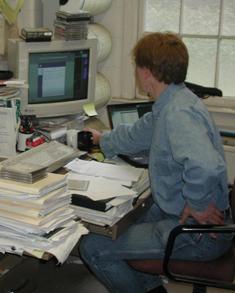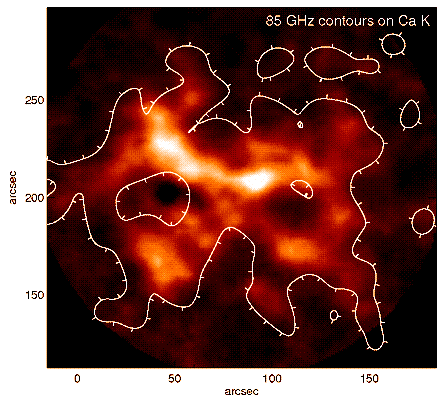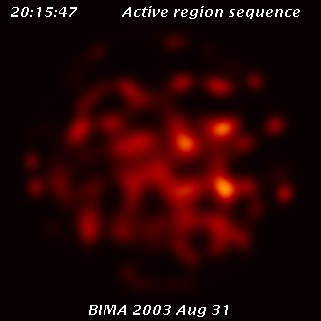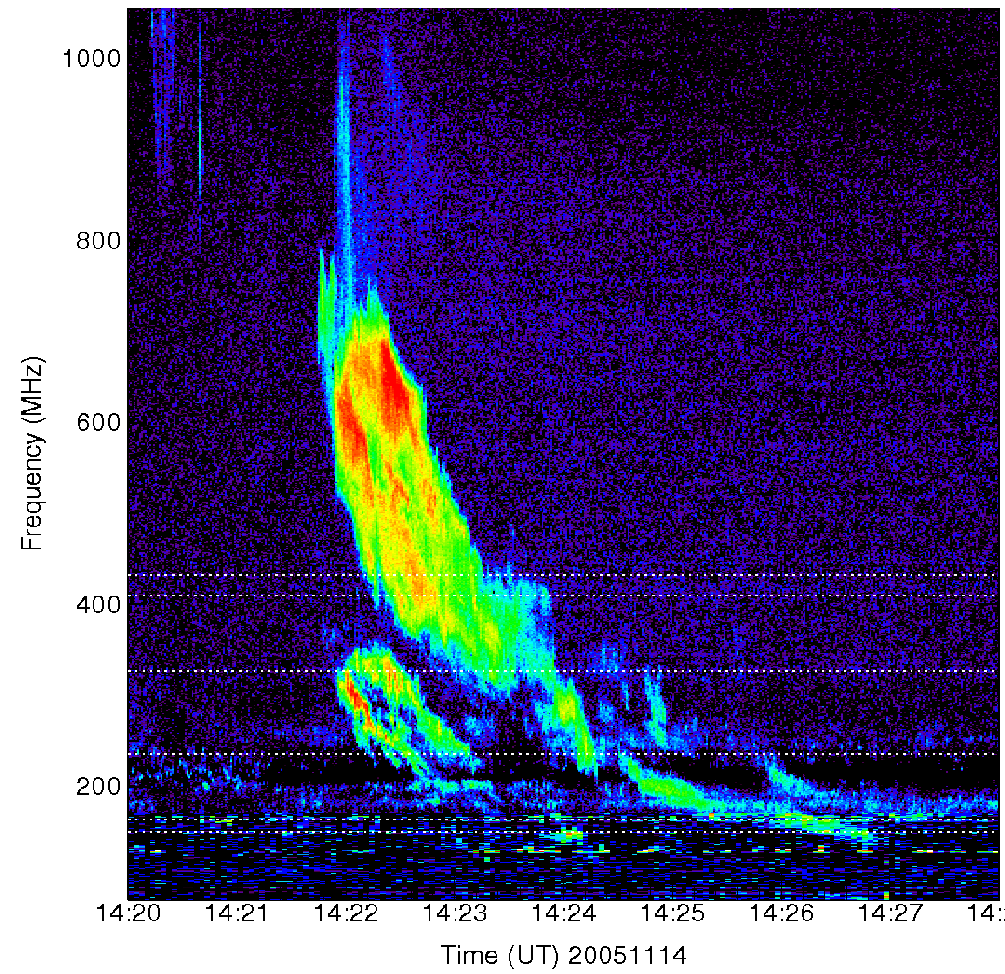 |
Stephen White is primarily a solar radio astronomer. Radio emission can probe every part of the Sun's atmosphere, from the chromosphere just above the solar surface to the corona in which solar flares accelerate electrons to high energies and coronal mass ejections travelling at thousands of kilometers per second drive shocks. These phenomena can be seen with CARMA at millimeter wavelengths, with the Nobeyama Radio Heliograph and the Very Large Array at centimeter wavelengths, and with the Nancay Radio Heliograph and the Giant Metrewave Radio Telescope at meter wavelengths. |
|
Dynamics of the Solar Chromosphere
|
 Contours of 85 GHz emission overlaid on a Ca K image of a solar active region, showing the excellent correlation. This is the first successful millimeter interferometer map of the solar chromosphere. |
 A 30-minute movie of a solar active region at 85 GHz at 15 second cadence. The beam size is about 10 arcseconds and the field of view is about 200 arcseconds. |

|
Green Bank Solar Radio Burst Spectrometer The example at left is a high-frequency Type II burst observed on 2005 November 14. Stephen White is also a participant in the Frequency Agile Solar Radiotelescope (FASR) project, a proposal to the NSF Atmospheric Sciences division of the National Science Foundation to build a radio telescope that will make images of the Sun at high spatial and temporal resolution from 100 to 20000 MHz. |
Back to the LMA page

